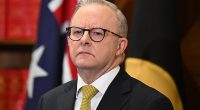“Australia bans — and they’re wonderful people, and wonderful everything — but they ban American beef,” he said on Wednesday (Thursday AEDT) in a news conference at the White House in Washington DC.
“Yet we imported $US3 billion of Australian beef from them just last year alone.
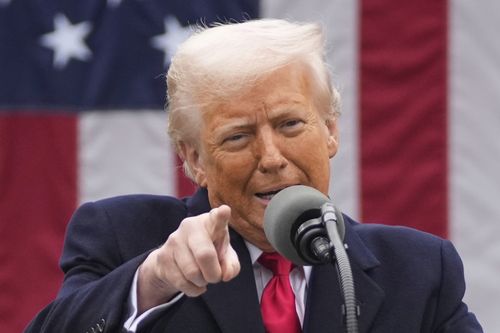
“They won’t take any of our beef.
“They don’t want it because they don’t want it to affect their farmers and you know, I don’t blame them but we’re doing the same thing right now starting at midnight tonight, I would say.”
Australia will be subject to a “baseline” 10 per cent tariff on all exports to the US. Other countries, such as China, face much higher tariffs.
During his announcement, Trump held up a chart showing the tariffs that will imposed on individual countries and trading blocs.
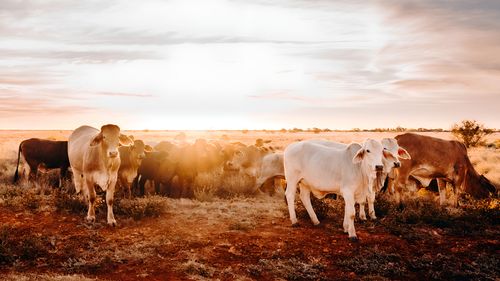
Australia was also not visible from behind the lectern as Trump held up a sandwich board with each nation named.
But taking the sign was US Commerce Secretary Howard Lutnick – where at the bottom of the chart it could be seen that the US would implement a 10 per cent reciprocal tariff on Australia.
Trump says his tariffs are about national security as much as economic prosperity.
He picked out medicine, tech, and ship manufacturing as being areas where the US was dependent on imports.
“We have to go to foreign countries to treat our sick,” he said.
“In short, chronic trade deficits are no longer merely an economic problem, they’re a national emergency that threatens our security and our very way of life. It’s a very great threat to our country.
“And for these reasons, starting tomorrow, the United States will implement reciprocal tariffs on other nations.”
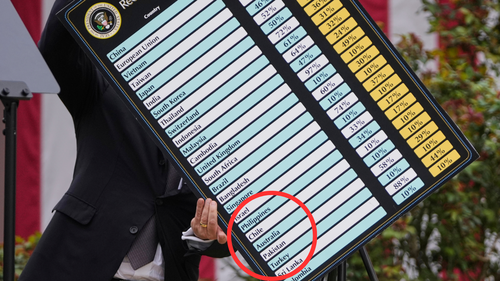
Why Australia doesn’t import American beef?
Australia has had a ban on uncooked American beef for more than 20 years.
The ban was introduced because the Australian government concluded America had not taken satisfactory steps to address the risk of mad cow disease.
Mad cow disease, or bovine spongiform encephalopathy, is a neurodegenerative disease that is fatal to both humans and cattle.
Humans can contract the disease by eating food contaminated with the brain, spinal cord or digestive tract of infected cows.
The disease is incurable and always fatal.
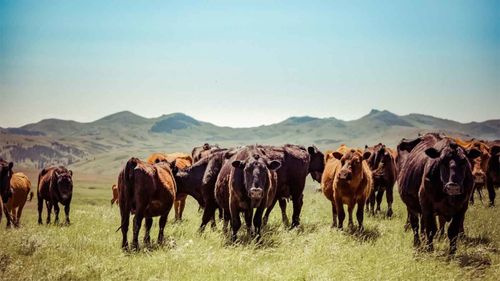
The most common way the disease is contracted is from eating infected tissue.
In the United States, parts of a cow that are not eaten by humans are often ground into a powder and often used as cattle feed.
This means American cows are sometimes eating the parts of other cattle that could carry mad cow disease.
That then puts those cows at risk of developing the disease, which could then be passed on to humans that eat them.
Tariffs to make hamburgers far more expensive
The Australian meat lobby has expressed their disappointment at Trump’s tariff decision.
The Red Meat Advisory Council chair John McKillop said the USA accounted for a third of Australia’s red meat exports.
“Australian beef is in an estimated 6 billion hamburgers consumed each year in the US and this tariff will cost the US consumer an additional US$180 billion (A$287 billion) per year,” he said.
“Without Australian lean beef blended with local fatty trim, the US would need to use higher value cuts in their burgers and miss out on valuable export opportunities. This in turn optimises value for US ranchers.”
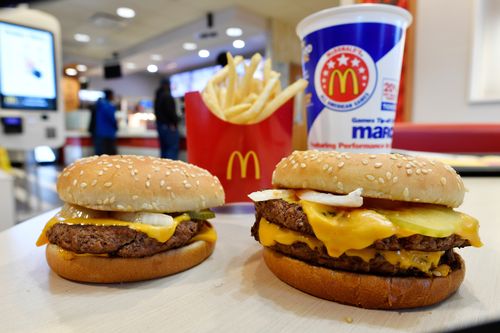
He said the tariffs on Australian red meat would cost American consumers US$600 million (A$958 million).
McKillop noted Australia also exports large quantities of red meat to China, Japan, Korea, the Middle East and North Africa.
Stocks fall after Trump announcement
US stocks tumbled in after-hours trading as President Donald Trump delivered remarks at the Rose Garden and unveiled sweeping tariffs.
Dow futures tumbled 256 points, or 0.61 per cent. S&P 500 futures slid 1.69 per cent. Futures tied to the Nasdaq 100 fell 2.54 per cent.
Stocks had closed higher ahead of Trump’s tariff announcement, but began to slide as Trump revealed his administration’s plan for rolling out tariffs.
Exchange-traded funds that track the major stock indexes also tumbled in after-hours trading. An ETF tracking the Dow fell 1.1 per cent, while an ETF tracking the S&P 500 slid 2.2 per cent and an ETF tracking the Nasdaq 100 slid 3 per cent.
Meanwhile, the most actively traded gold futures contract in New York briefly rose above US$3200 a troy ounce, a record high. Gold is up more than 20 per cent this year and just posted its best quarter since 1986. Gold is considered a safe haven amid economic and political uncertainty.
